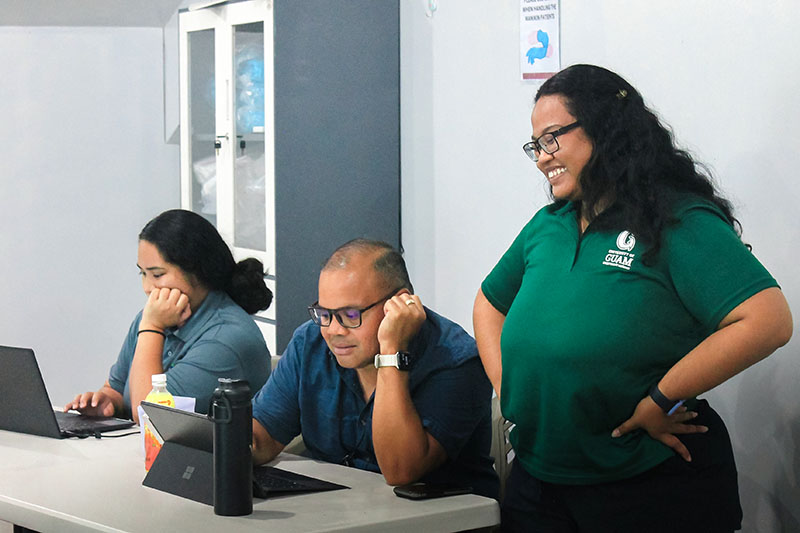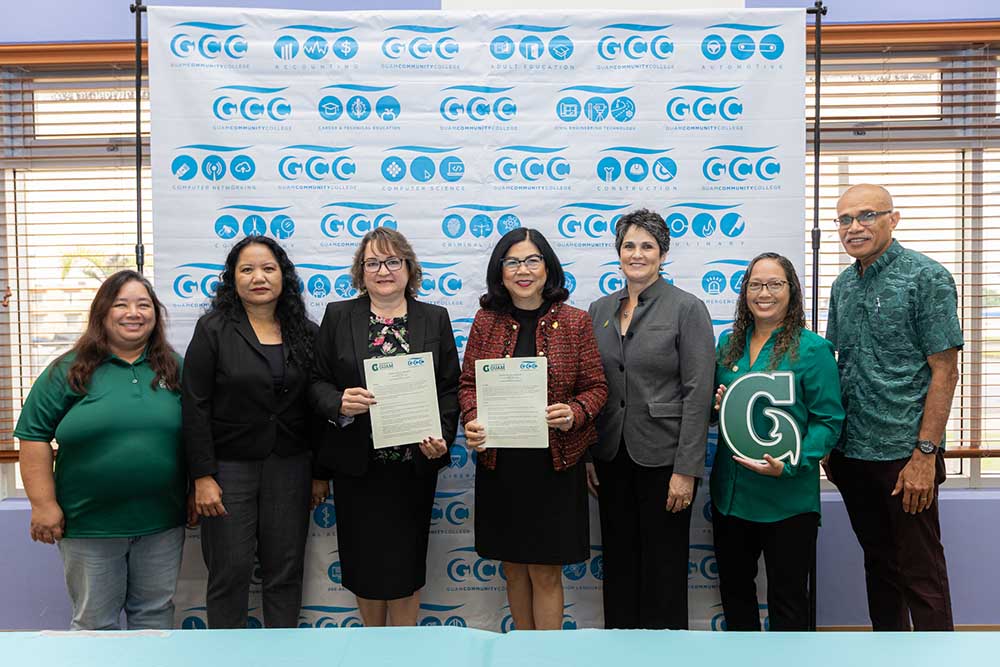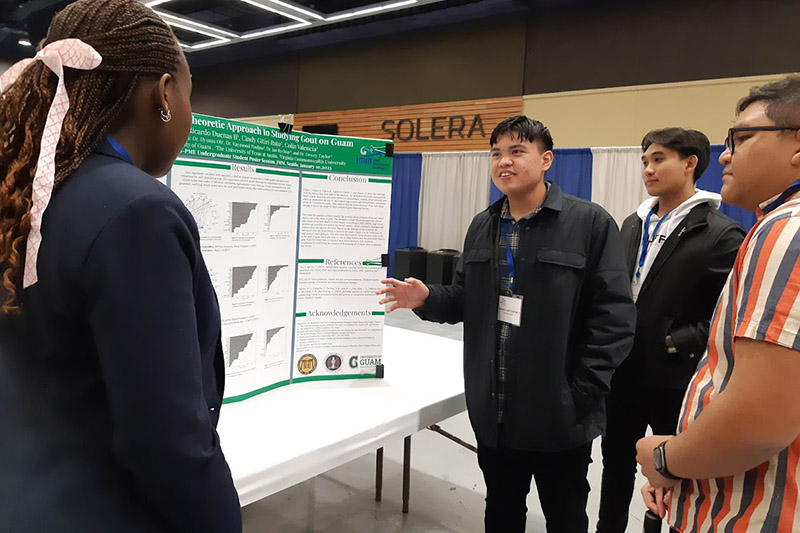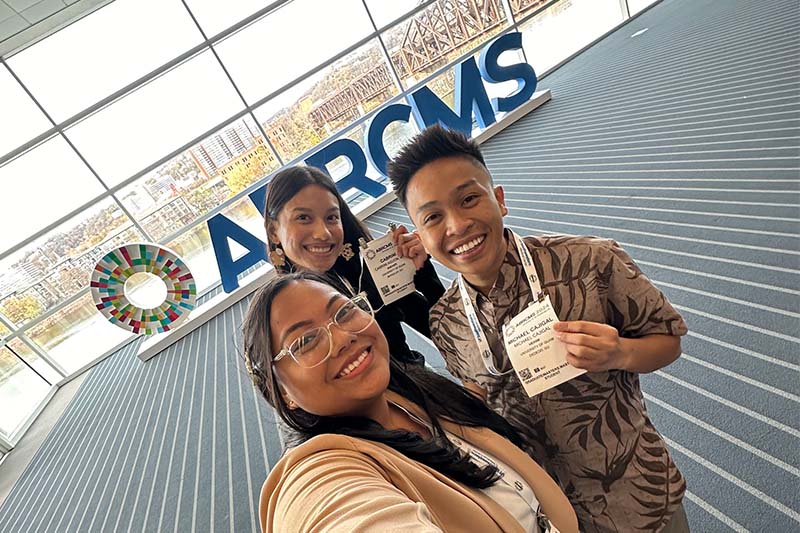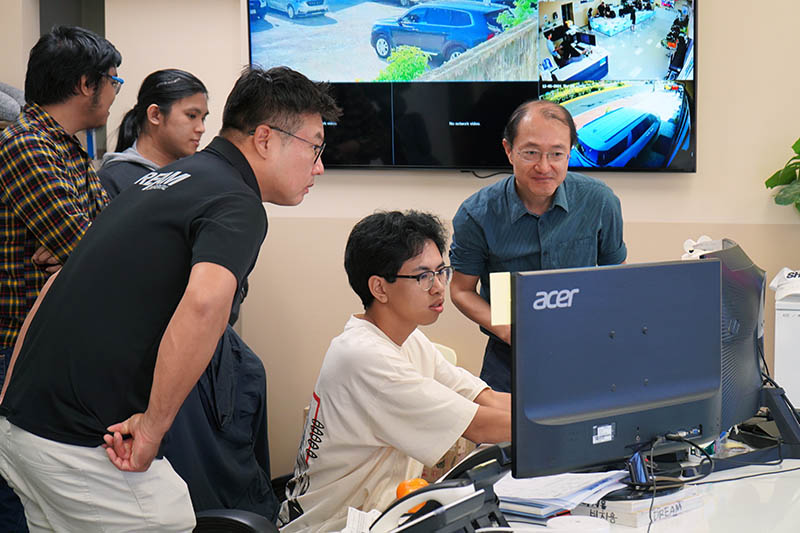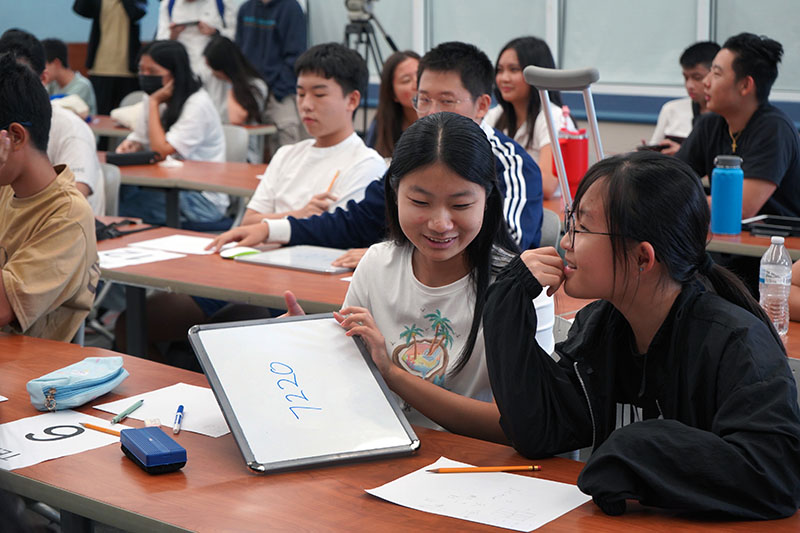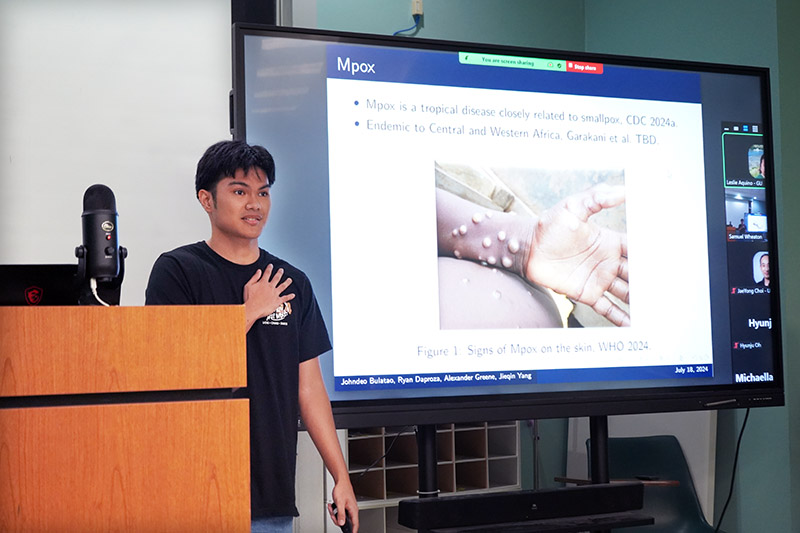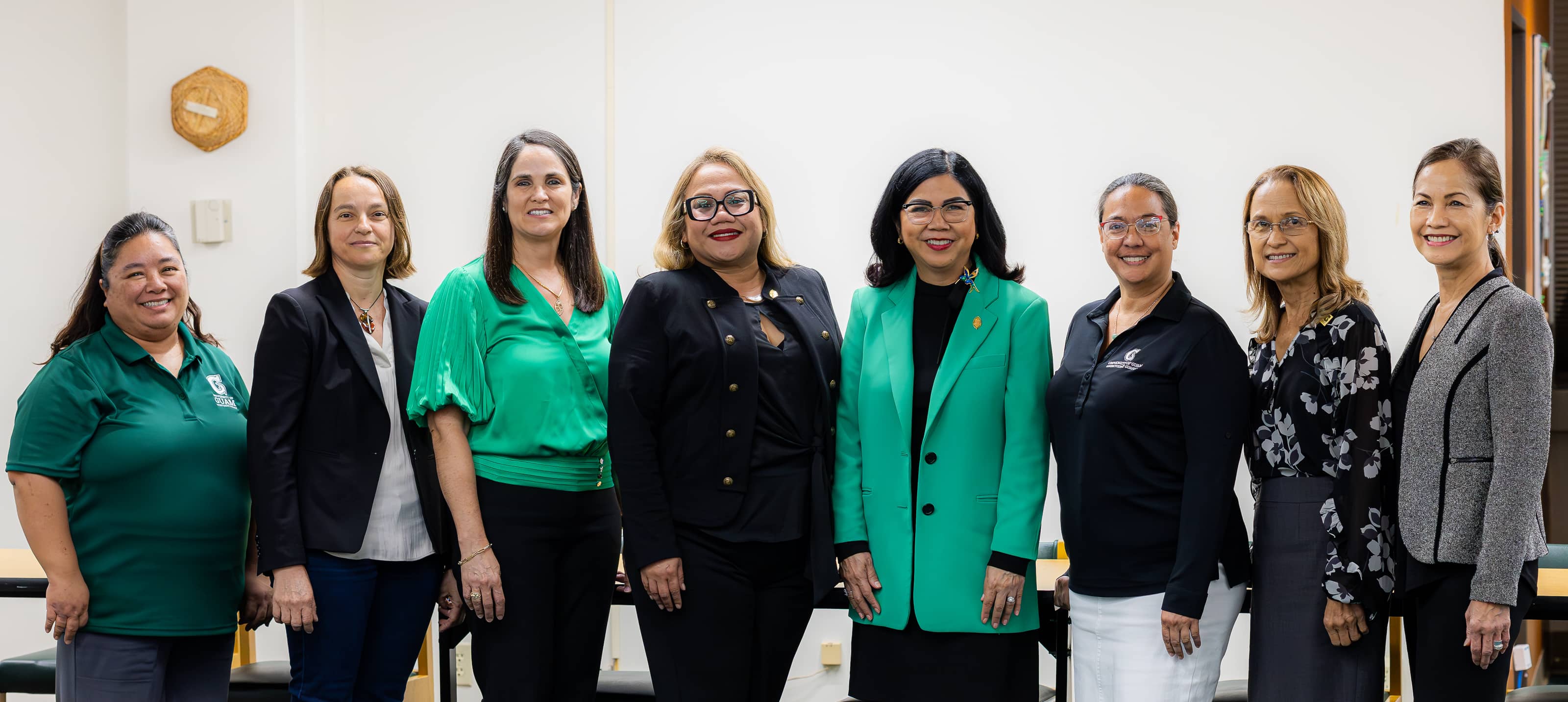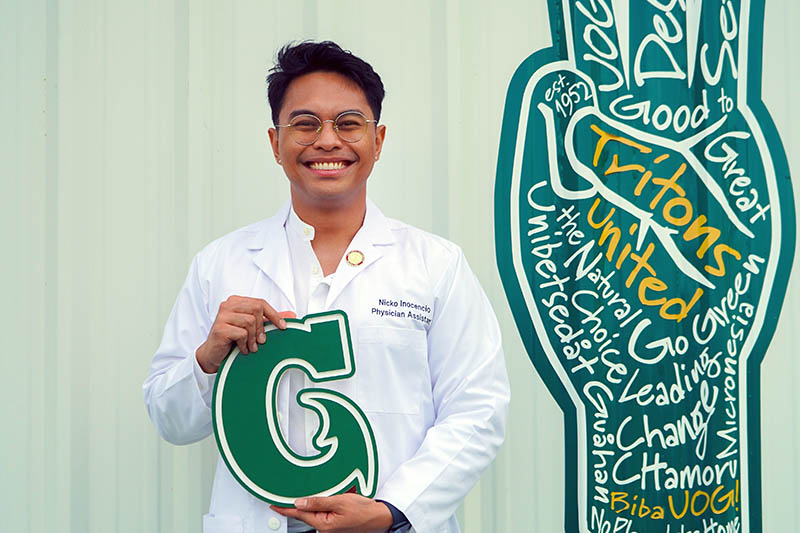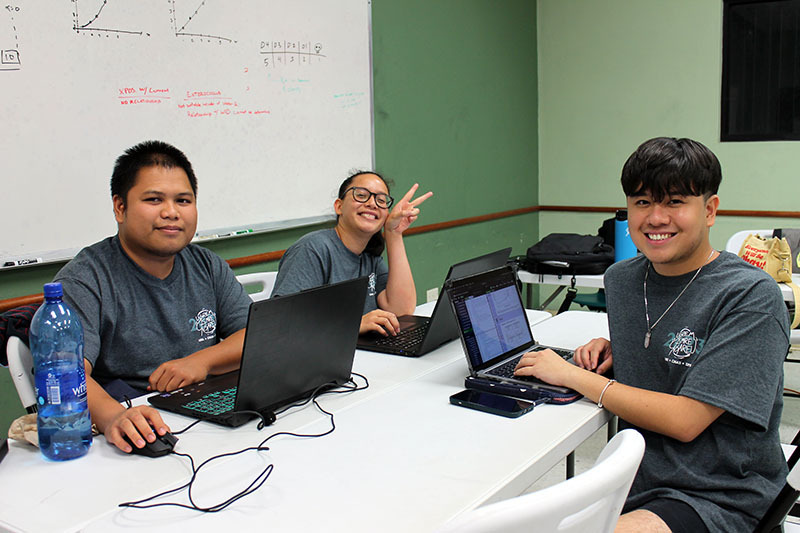Division of Mathematics and Computer Science
Division of Mathematics and Computer Science
Division of Mathematics and Computer Science

-
Building data-analysis capacity in Micronesia: UOG grad students lead workshops in Palau and Saipan
-
UOG, GCC renew 2+2 Computer Science Pathway for 5 more years
-
Undergrads travel to Seattle for world's largest meeting of mathematicians
-
Data science students analyze Guam health data and present findings at biomedical research conference
-
Computer science students engineer software for car rental agency
-
UOG sets the stage for STEM careers with high school Math Day
-
Nothing is Mpox-ible: Students delve into real-world problems using math
-
UOG launches new data science and library science master's programs
-
UOG alum becomes physician assistant and begins certification in life-saving surgeries
-
Summer REU teaches undergrads, high schoolers to solve real-world problems using math
NSA Math Research Experience for Undergraduates (REU):
Game Theory and Graph Theory
The Division of Mathematics & Computer Science will host a joint Research Experience for Undergraduates (REU) program on game theory and graph theory with Virginia Commonwealth University.
The REU will provide 7 undergraduate students with hands-on engagement on theoretical and computational research and to improve problem-solving, communication, and computer programming skills. Student teams will be formed to work on the research projects listed in the next tab.
The eight-week REU will be conducted in-person at the University of Guam campus every weekday from 9 a.m. - 5 p.m. ChST from May 28 - July 20, 2024.
Selected applicants will receive a $4,000 stipend ($500 per week). Additionally, students will be funded to present their work at conferences after the REU programs. Funding is available for room and travel expenses for off-island participants.
Research Assistant Position
AT A GLANCE
- Who: UOG undergrads in the Fanuchånan (Fall) 2024 semester who are U.S. citizens or permanent residents
- Time: 9 a.m. – 5 p.m. ChST daily
- Dates: May 20 – July 20, 2024
- Modality: In-person (UOG Campus)
- Stipend: $4,500
- Deadline to Apply: March 31, 2024
NSA REU RESEARCH ASSISTANT
Purpose
Our summer research program introduces undergraduates to mathematical research in disease prevention and applied graph theory. Moreover, the NSA REU Research Assistant (REU RA) program aims to give Fall 2024 undergraduates in STEM fields an opportunity to gain experience as research assistants and near-peer mentors for undergraduates and high school students participating in UOG Summer math research programs: GECCO Summer Math Research Experience (SMRE), NSA Research Experience for Undergraduates Programs (NSA REU), National Science Foundation IHBEM REU (MAVEN), and Young Scholars Research Experience in Mathematics (YSREM).
Summer Math RAs will work with students across all 4 four summer programs and will gain knowledge about each research area. Ideal candidates will have previous experience as participants in undergraduate research programs in math or other STEM fields.
UOG summer math programs and research areas:
- GECCO SMRE: Coral Reef Resilience – Students will study mathematical models of coral reef responses to adverse effects and stressors such as bleaching, disease, low water flow, and high turbidity.
- NSA/YSREM: Disease Prevention – Students will build on a mathematical model describing the conditions under vaccination and quarantine with dangerous side effects.
- NSA/YSREM: Applied Graph Theory – Students will learn computation tools (Sage, MATLAB) to understand, create, and analyze solutions of Sudoku boards.
- NSF IHBEM: Multidisciplinary Analysis of Vaccination Games for Equity (MAVEN) - Students will build on a mathematical model and apply vaccination game theory, providing a useful framework for analyzing individual and collective decision-making regarding vaccination.
Math Faculty Mentors: Dr. Leslie Aquino, Dr. Hyunju Oh, and Dr. Raymond Paulino
Subject Matter Faculty: Dr. B. Bentlage and Dr. L. Raymundo; Dr. D. Taylor and Dr. J. Rychtar (from Virginia Commonwealth University)
- Program Benefits:
- Knowledge of research project areas
- Near-peer mentoring experience
- Teaching experience
- Skills in leadership and teamwork
- Faculty Mentorship
- Networking with participants in other summer research programs.
- $4,500 stipend
- Eligibility:
- UOG undergraduate in the FALL 2024 semester majoring in Math, Computer Science, Biology, Engineering, or Chemistry (STEM).
- Must be a U.S. citizen and/or permanent resident of Guam.
- Able to commit to the full 9 weeks (about 2 months) of the Summer Math Research Assistant program.
- Prerequisite Course: MA204 – Calculus II or equivalent
- Knowledgeable in Overleaf LaTeX
- Preferred Knowledge and Skills
- Proficient in using LaTeX and Beamer (or other programs) for mathematical text and presentations.
- Proficient in MATLAB and/or R.
- MA375: Numerical Methods or other scientific computing experience.
- Preferred: MA301 Differential Equations, MA341 Linear Algebra, and MA385 Applied Statistics or MA387 Statistics for Science
- Expectations:
- Hold technical workshops on LaTeX, MATLAB, R.
- Hold workshops on research ethics and presentation skills.
- Assist students with questions for all four programs.
- Assist with organizing proper fundings for refreshments and luncheons for students
- Help facilitate program activities, such as field trips and weekly seminars.
- Help facilitate orientation sessions for all three programs.
The University of Guam and Research Corporation of the University of Guam are Equal Opportunity Employers that have received NSA funding to broaden the participation of underrepresented students in STEM fields. As such, the SMRA Program remains open to all qualified students, but women, minorities, and students with disabilities are particularly encouraged to apply.
APPLICATION FORMS!
- Application Form: https://forms.gle/UQuMh3oCxDcAkbzq7
- Faculty Recommendation Letter: https://forms.gle/TEXuu7fGYoiXaWX48

This program is supported by the National Security Agency.
2024 Research Projects
Game Theoretical Models of Disease Prevention
With Dr. Hyunju Oh, Dr. Leslie Aquino, Dr. Jan Rychtar, and Dr. Dewey Taylor
The students will pick a preventable disease of their interest, do a literature search and build a compartmental ODE (ordinary differential equation) model incorporating the disease prevention. Students will solve for disease-free and endemic equilibria and determine conditions for their stability using the effective reproduction number. They use these results to get an incentive function which quantifies the net benefits of the preventive actions compared to the net benefits of no action at all when the population vaccination coverage (or the average use of the preventive action) is p. The incentive function is typically decreasing and concave down on the interval [0, p0] where p0 is the population level of preventive action needed for disease elimination. The solution of the game, the Nash equilibrium, is given as the (unique) root of the incentive function. Students also typically have to carefully calibrate the ODE model; and they perform sensitivity and uncertainty analysis as well as validate the model and its findings of independent sets of data.
Applied Graph Theory: Analyzing Sudoku boards
With Dr. Raymond Paulino
Sudoku is a popular logic-based puzzle game. The most commonly played size is on a 9 × 9 board, each row, column, and marked 3 × 3 block must contain the numbers 1 through 9. The goal is to place the numbers from 1 − 9 into the empty cells in such a way, that in every row, every column and every region (3 × 3 block) each number appears only once. In general a sudoku board can be formed for any n ∈ N, with the resulting board having n blocks of size n × n and total size n2 × n2. The technique of deletioncontraction can then be used on a partially colored graph, similar to Sudoku, to generate a partial chromatic polynomial. These polynomials provide information about the Sudoku game board and may indicate the number of valid solutions for a given puzzle.
The main objective of this porhect is to provide students with an insight of graph theory and its application in proper graph coloring. Students will be exposed to concepts in basic graph theory, and may include some linear algebra and abstract algebra. With the use of original-Sudoko and generated-Sudoku puzzles, students will calculate the partial chromatic polynomials of each puzzle to see if the puzzle is solvable. Furthermore, they will analyze whether the solvable board puzzles have a unique solution or many solutions.
Archive
2023 Projects
Game Theoretical Models of Disease Prevention
With Dr. Hyunju Oh, Dr. Leslie Aquino, Dr. Jan Rychtar, and Dr. Dewey Taylor
The students will pick a preventable disease of their interest, do a literature search and build a compartmental ODE (ordinary differential equation) model incorporating the disease prevention. Students will solve for disease-free and endemic equilibria and determine conditions for their stability using the effective reproduction number. They use these results to get an incentive function which quantifies the net benefits of the preventive actions compared to the net benefits of no action at all when the population vaccination coverage (or the average use of the preventive action) is p. The incentive function is typically decreasing and concave down on the interval [0, p0] where p0 is the population level of preventive action needed for disease elimination. The solution of the game, the Nash equilibrium, is given as the (unique) root of the incentive function. Students also typically have to carefully calibrate the ODE model; and they perform sensitivity and uncertainty analysis as well as validate the model and its findings of independent sets of data.
Game Theoretical Model of Insect Invasion
With Dr. Hyunju Oh, Dr. Leslie Aquino, Dr. Jan Rychtar, and Dr. Dewey Taylor
Ideally, we would like to create and solve a general “insect invasion prevention game” in which several different entities with different interests interact and potentially try to eliminate the insect or at least curb the negative effects of the invasion. We will build on the [insect] population dynamics (as provided) and incorporate the game and the players to see what the optimal actions are and what kind of central action should be taken to curb negative impacts of the insects on local agriculture and economy as a whole.
Magic Tricks on Codes over Finite Fields
With Dr. Hideo Nagahashi
Coding theory, and its application to recreational mathematics–magic tricks–is well suited for students’ first encounter with mathematical research. In coding theory we study the codes used for the error detection and correction of data transmission. When the audience intentionally tells lies replying to the magician’s questions, it can be considered as errors, and the error detection and corrections are interpreted so that magicians figure out the correct response to surprise the audience. The goal of the project is to create original magic tricks using various (existing or new) codes.
Students will encounter various examples of codes such as Hamming, BCH, Reed-Solomon and Golay codes. While learning code theory, students will review linear algebra and learn some concepts of abstract algebra such as the ring of integers modulo n, finite fields, and polynomials. Students will also learn the computational tool (SAGE Math) to understand and test codes. Applying code theory in this manner strongly motivates students to learn advanced algebra, and helps them to improve their creative and independent skill for doing mathematical research.
Colorings and Matrices of Graph Powers
With Dr. Raymond Paulino
The main objective of this project is to investigate connections between the adjacency and/or Laplacian matrices of graph G , its powers Gk, and the chromatic numbers of G and Gk. Students will study the spectrum of adjacency and Laplacian matrices of Gk for a fixed graph G and increasing k=1,2…,d, where d is the diameter of G, i.e., the maximum distance among all the vertices in G. The students will look for analogues of that sequence for the spectra of AGk and LGk.
In this project, students will draw and visualize graphs using online computer software such as SAGE Math. Students will then look at connections between the matrices and chromatic numbers of the graphs. Students will discover that with certain types of graphs, the spectrum of the adjacency matrix can provide upper and lower bounds for their chromatic number. While learning graph theory with matrices, students will be introduced to selected topics from linear algebra. Graph theory and its applications encourages students to improve their creativity and their interest in mathematics.

Application Deadline
March 31, 2024
Eligibility
- U.S. citizens or permanent residents
- STEM major/minor
- Undergraduates in the Fall 2024 semester
Applications are especially encouraged from students who identify with populations currently underrepresented in mathematics graduate programs, from schools with limited access to research opportunities and current freshmen and sophomores.
Prerequisites
- Calculus I (grade "B" or better)
Application Forms
AT A GLANCE
Time: 9 a.m. to 5 p.m. ChST daily
Dates: May 28 - July 20, 2024
Modality: In-Person (UOG Campus)
Who: Undergrads in the Fall 2024 semester who are U.S. citizens or permanent residents.
Stipend: $4,000
Deadline to Apply: March 31, 2024
NOW HIRING: REU Research Assistant
CONTACT US
If you have additional questions, please email them to mathreu@triton.uog.edu.
